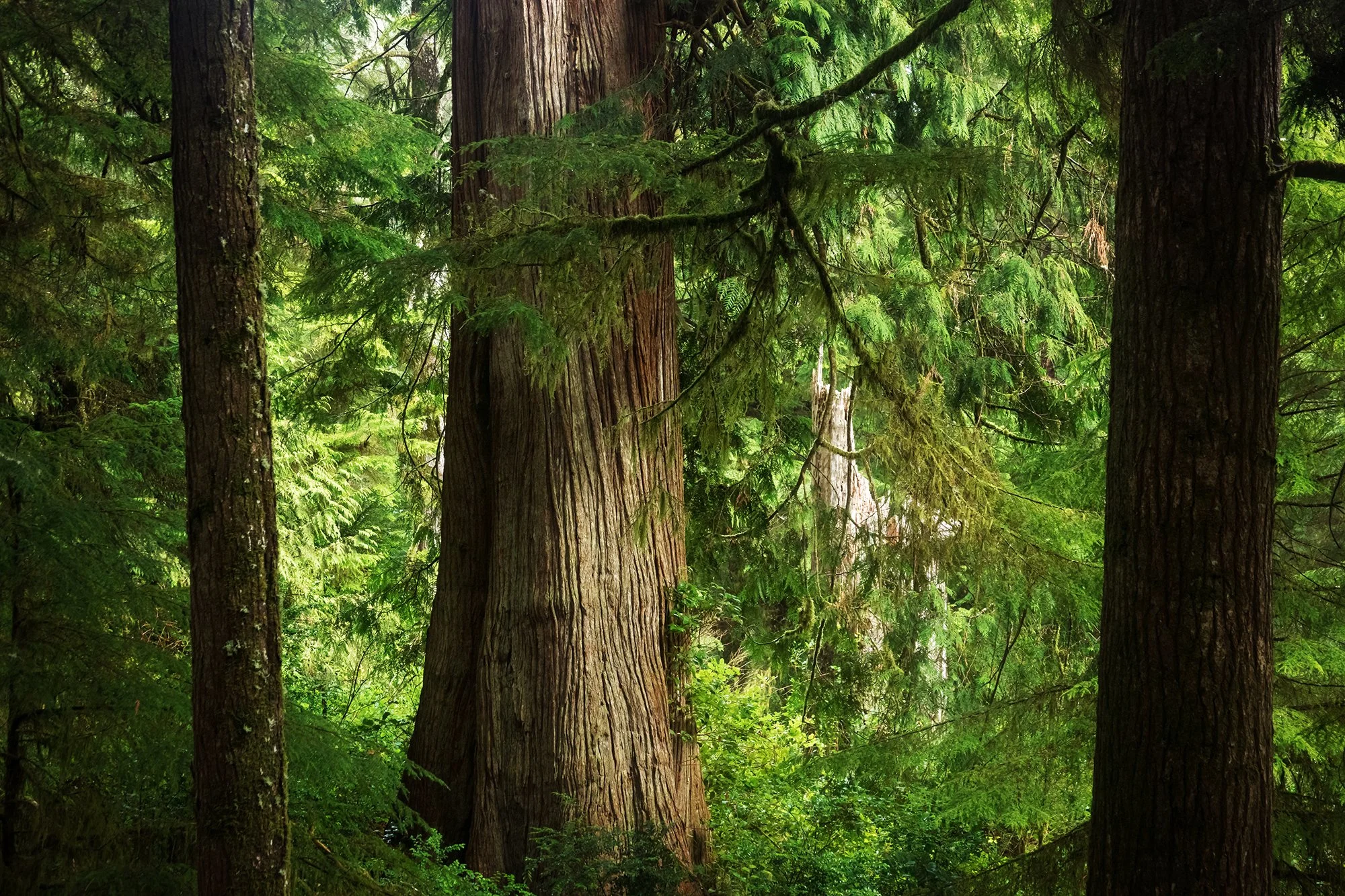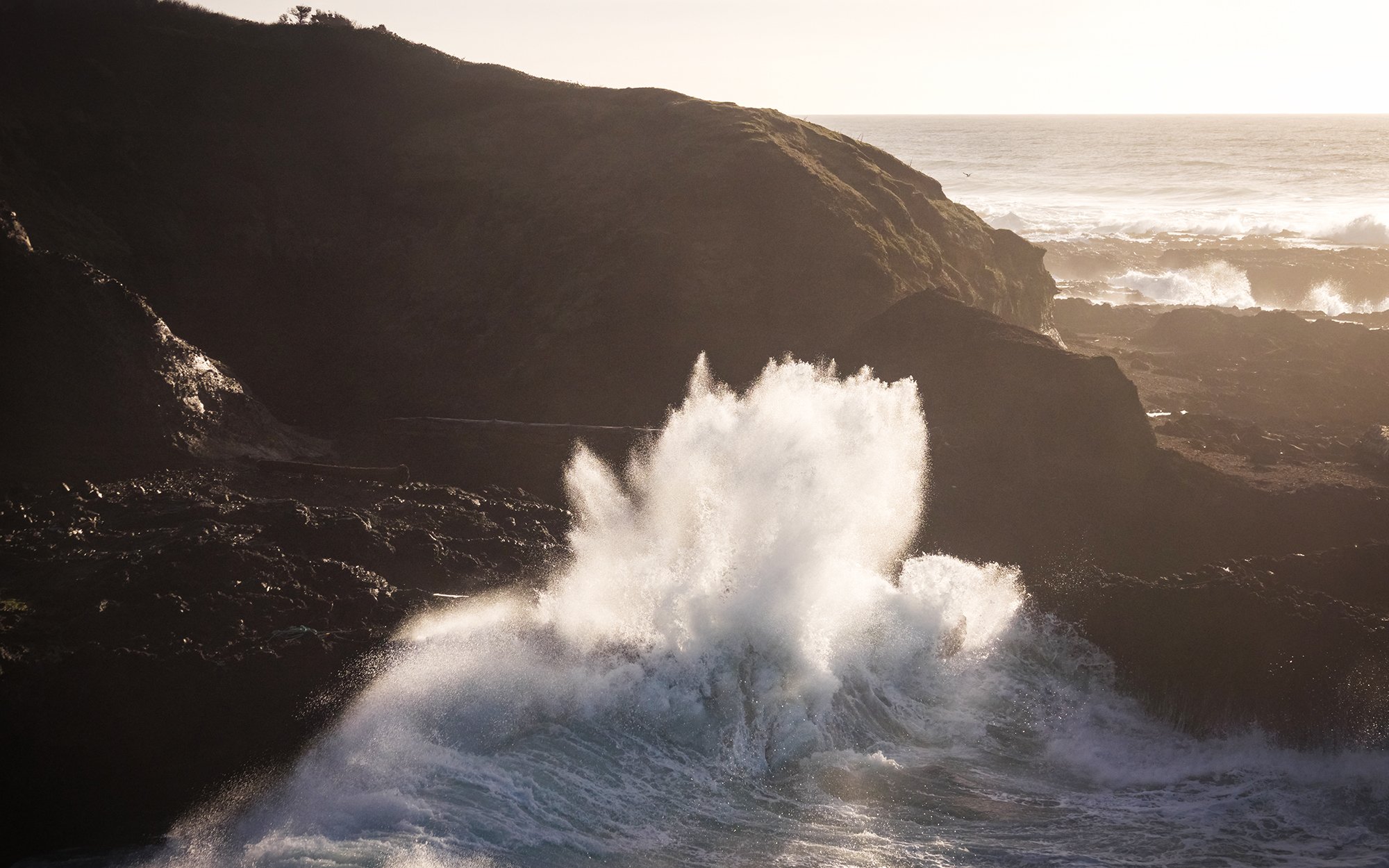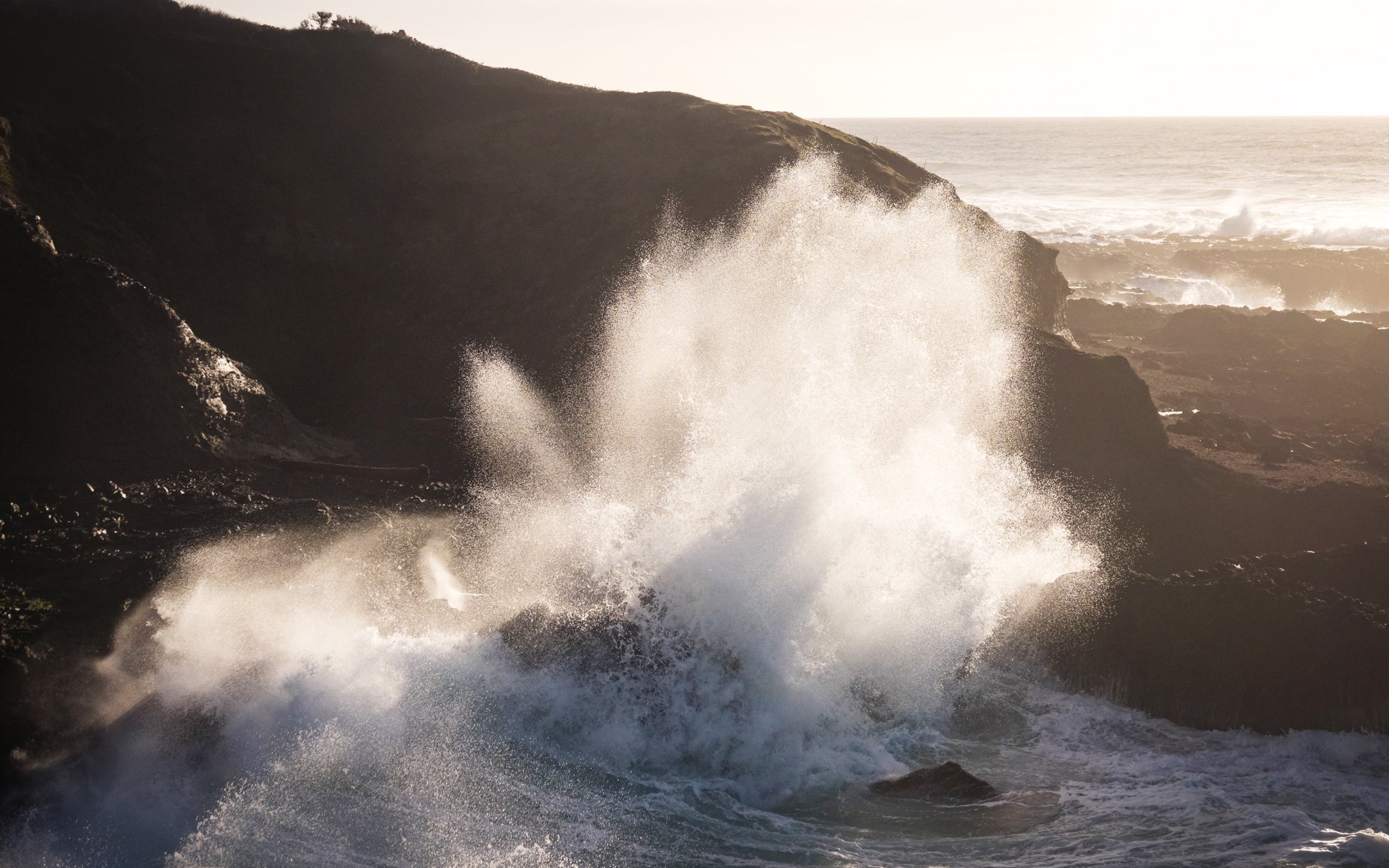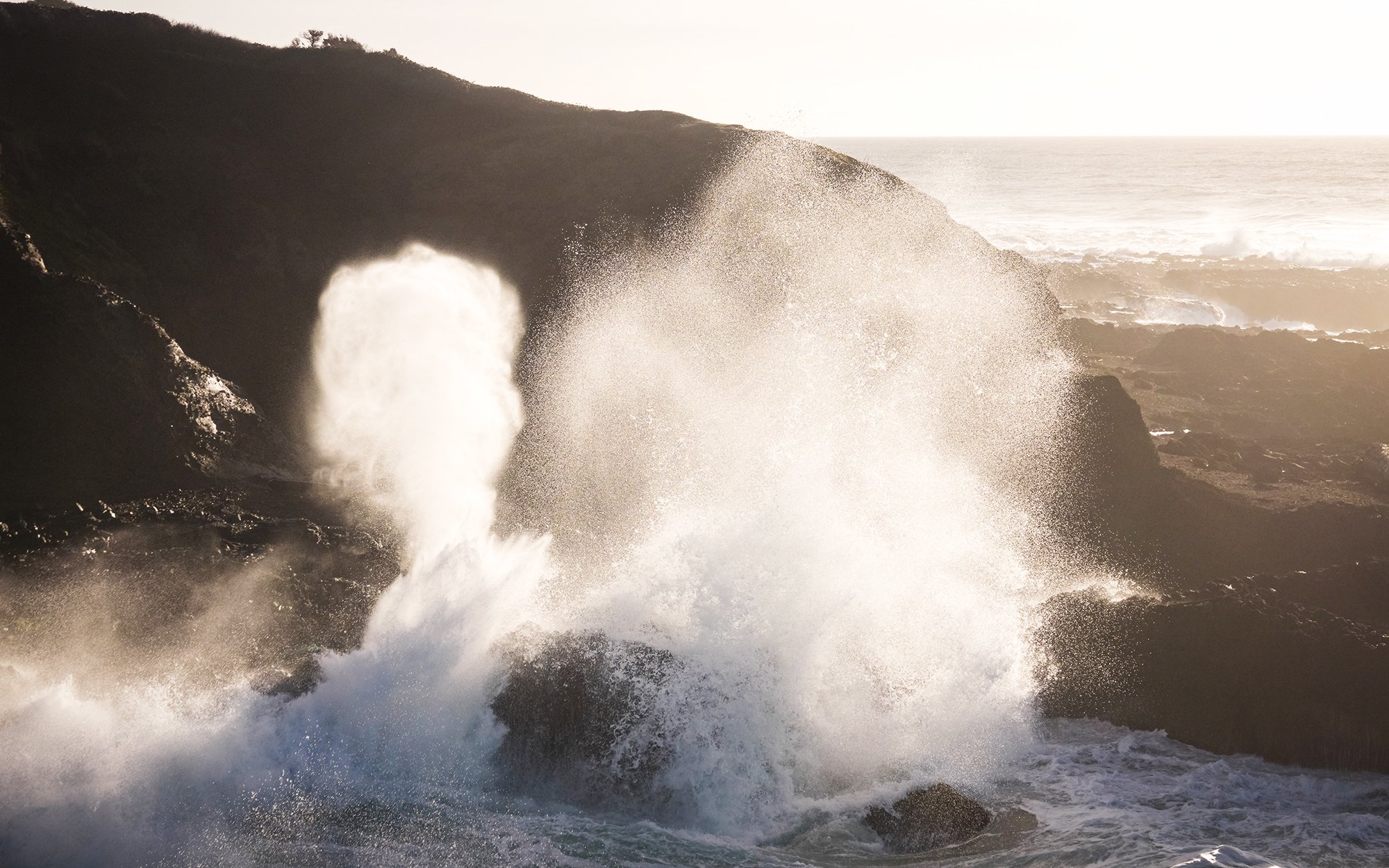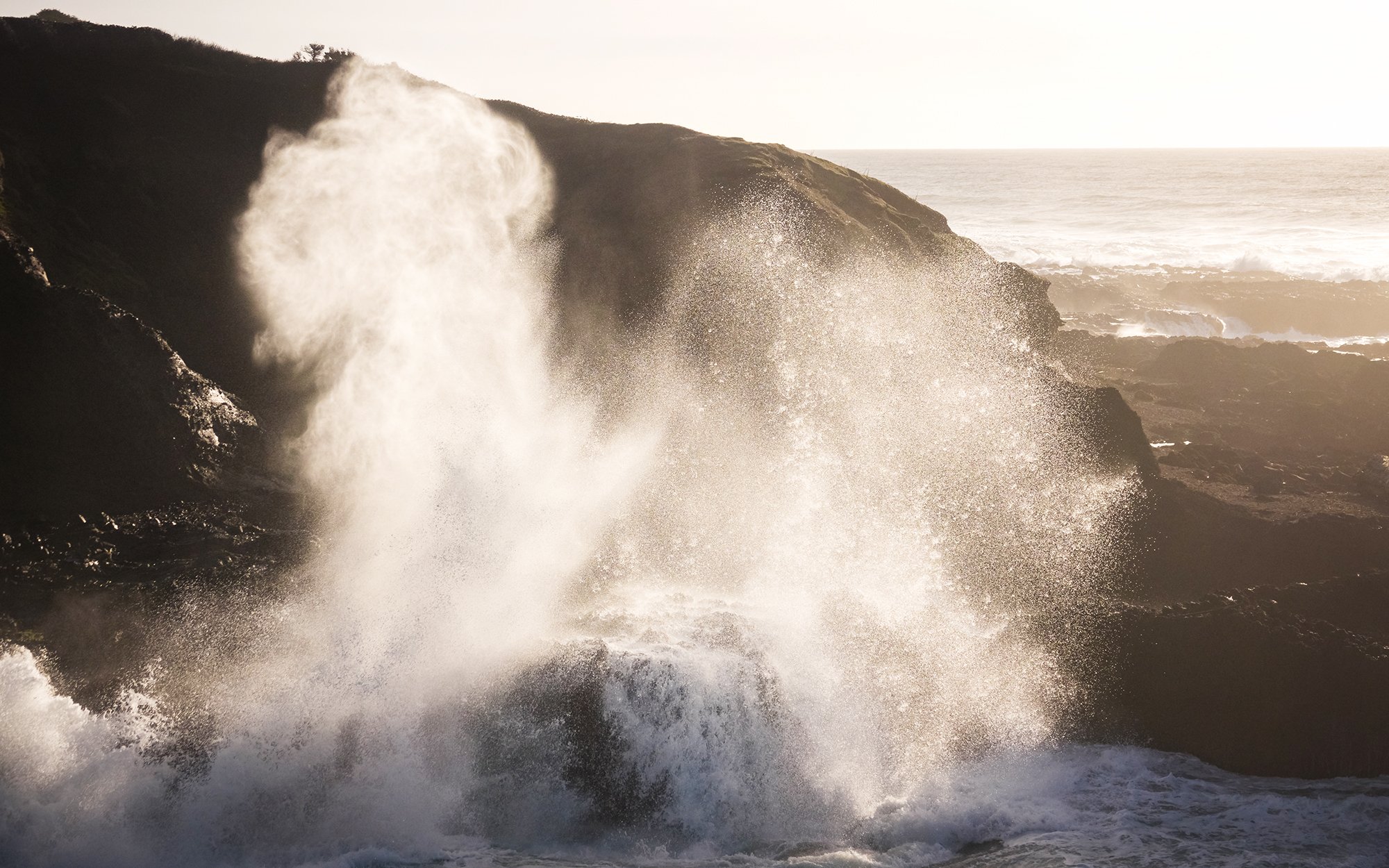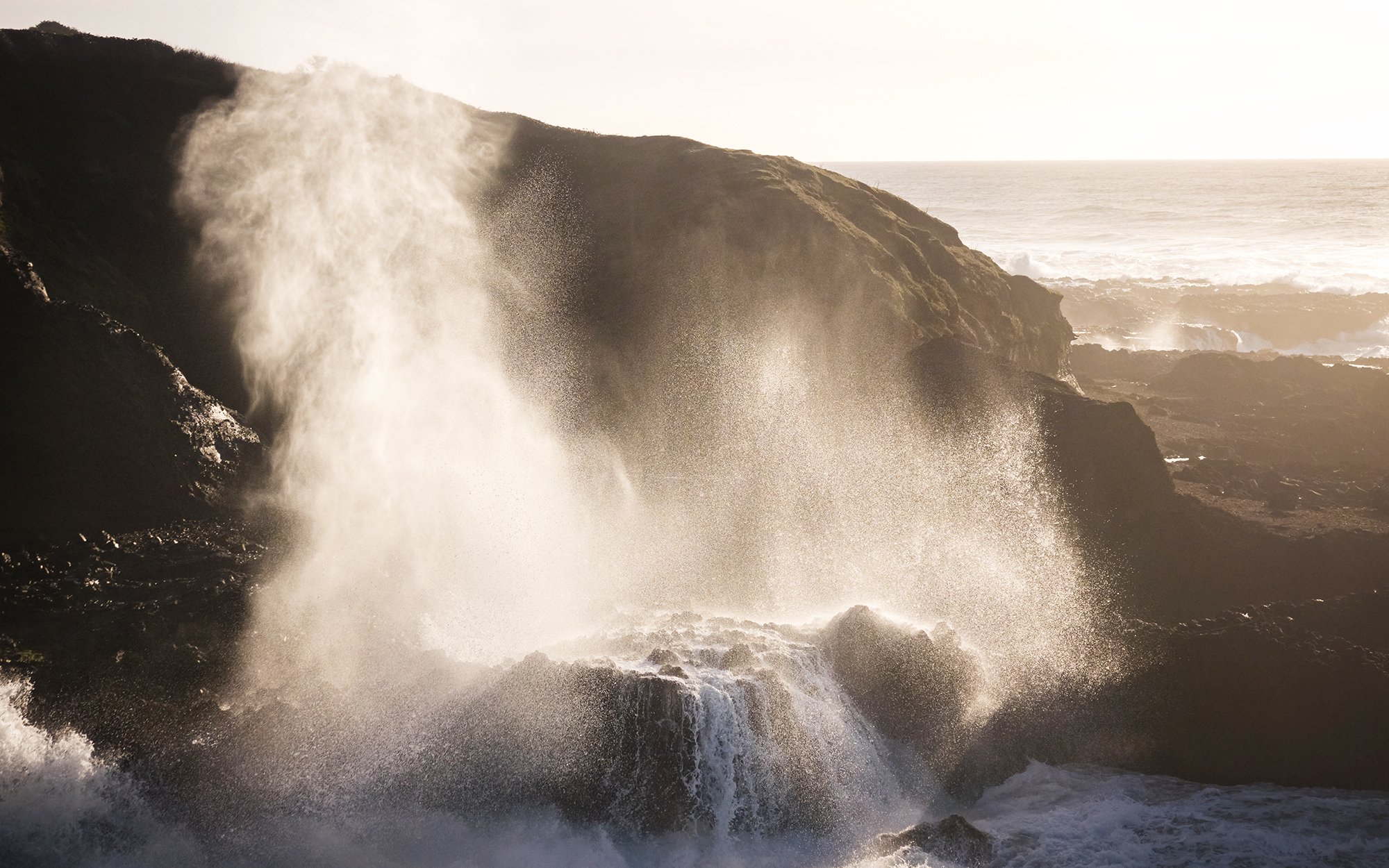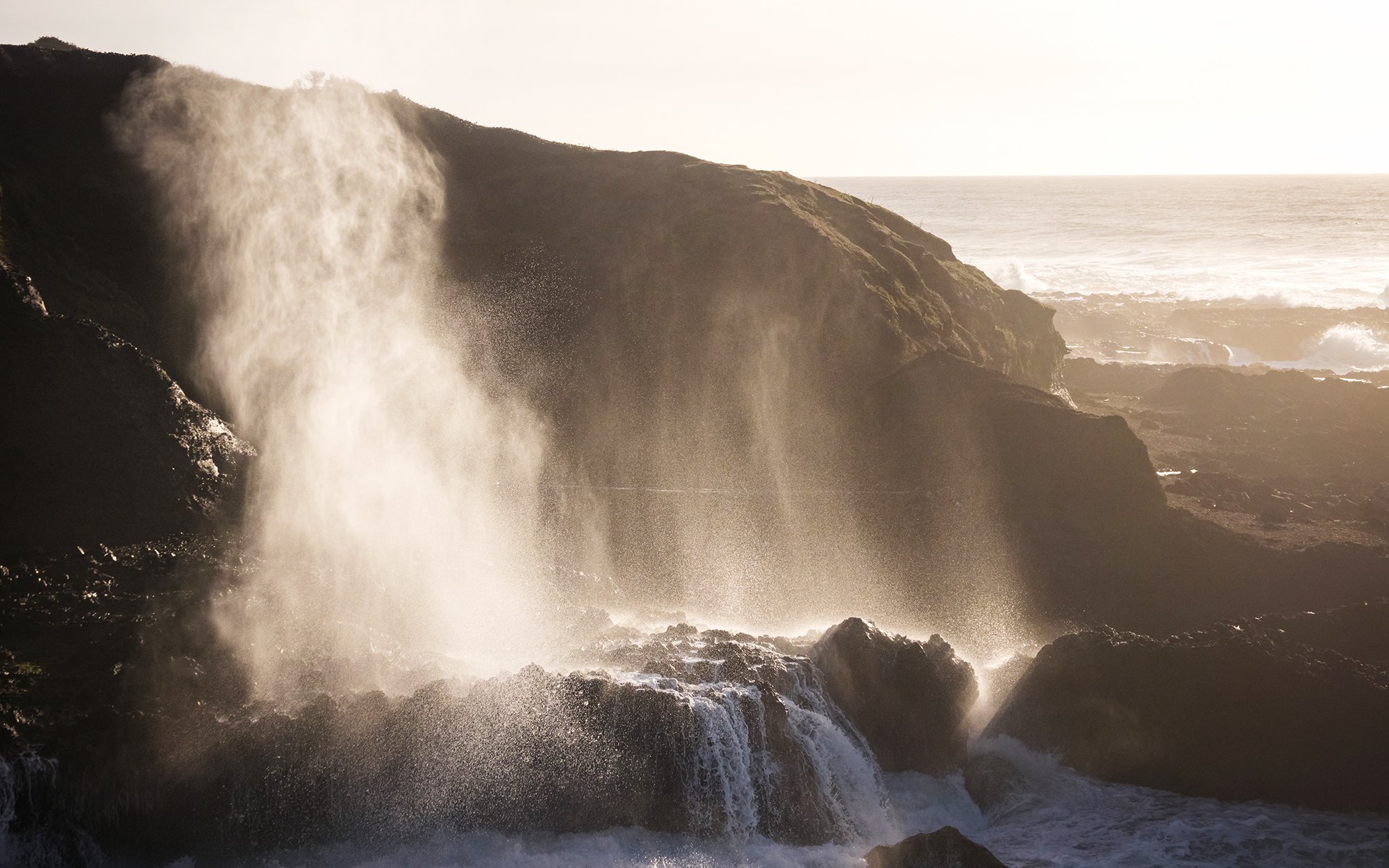“Be warned, this outer edge of Canada is lonely, exciting, and unforgettable. It is a disease. It may fill your comfortable life with restlessness.”
— R.M.O. McMinn
Island Events, June 20, 1952
My final morning in Tofino. Peeking outside my window before sunrise, I see that the sky is still a sheet of grey cloud, so I reset the alarm and ensconce myself back into bed. This is vacation, after all. And while I have several hours of driving to extricate myself from the Island’s west coast to the east, the day’s itinerary promises to be a more relaxed one than the past few days. After a few more hours lazing around, eating breakfast, and getting my things re-packed into the car, I set back off along the Pacific Rim Highway, pausing briefly for roadside photos near Kennedy Lake. My first stop of the day, in Port Alberni, is actually a shopping plaza with a shoe store. I’ve resolved to pick up a pair of walking sandals so that I don’t have to lug my muddy, stinky boots onto the plane and all the way back home to Massachusetts yet again; this day will be my au revoir to the faithful Redhead boots I’ve worn since 2019. As I tend to be with any sort of clothes shopping, this is an in-and-out affair. Walk in, grab a pair, try on two sizes, and purchase. After a quick pit stop and bathroom break, I continue east with a tank full of gas and new shoes in the trunk. I briefly pause for a stretch break on the shore of Cameron Lake, a pristine freshwater lake wedged in the valley between Mt. Arrowsmith and Mt. Wesley. This body of water, according to local lore, is reportedly the home of some sort of cryptid lake monster after several sightings in the early 2000s; today, I see nothing except the windy wake on the water’s surface and the traffic along the adjoining highway. A few miles down the road, I stop at Little Qualicum Falls Provincial Park, where a loop trail circles both sides of a deep, densely vegetated gorge, passing by two sets of beautiful waterfalls. It’s intermittently raining, making tripod usage and long-exposure photography more cumbersome than usual, but using my umbrella setup and my sleeve as a lens cloth, I manage to make a few half-decent images.
My second waterfall stop of the day is at Englishman River Falls Provincial Park, a little further down the road, past the Old Country Market in Coombs. Here, I walk the length of another pleasant loop trail that winds through stands of second-growth forest, paralleling the course of the Englishman River as it descends toward the straits east of the Island. The upper falls here are impressive, a canvas of tall white cascades bigger than anything I’ve seen since (as far as I can remember) New Zealand. But it’s the lower falls, emerging from the gorge and plunging into a deep-sapphire pool at the edge of the forest, that is the real photographic gem in my eyes. I take my time here, photographing the lichen-covered trees, the moss hanging from the cliffsides like forest tapestry, and the startling juxtaposition of the whitewater rapids beside a tall, leafy maple tree. Were it not for the rain, I would have stayed much longer and continued finding compositions; but were it not for the rain, the river and its surroundings also would not have been so active and so spectacular.
My third and final stop in Parksville is the summit of Little Mountain. The narrow road up the mountain leads past hidden houses and driveways, to the base of the radio tower at the top of the mountain. From here, a short path through the trees takes me onto an open cliffside fringed with arbutus (Pacific madrone) trees, their bright vermilion-smooth bark standing in sharp relief to the misty scene beyond. Down in the valley stretching between Parksville and the mountains, the afternoon’s rainstorm is clearing away, gradually revealing more and more layers of treetops in the forest. I sit on the cliffside for awhile, watching the clouds race and the views develop to the south and the east. As the rain moves away to the north, beautiful skies and lush green hillsides are revealed; I take a panorama, various long shots of the landscape using my telephoto lens, as well as obligatory end-of-trip selfie on the cliffside.
Back in the car, it’s a one-and-a-half hour drive southward to my destination for the night, Cowichan Bay, a coastal fishing community situated at the mouth of the Cowichan River delta. Staying in Cowichan Bay will allow me to not only have a quieter night by the water, away from the hustle and bustle of the Island’s east coast population centers, but it gives me only an hour of driving left the following morning, when I’ll be heading back to Victoria International to catch a morning flight. After a casual cruise down the highway past Nanaimo, I arrive at Cowichan Bay. Planning on an early night, I immediately set out out to grab photos of the estuary from the park across the street from my motel room, followed by a walk along the waterfront and a gluttonous dinner at The Vine: a seafood potato “pie” in cream sauce, and an obligatory order of poutine, which has been missing so far from my trip. The next morning, I bid farewell to my old boots and don my new walking sandals for the drive to the airport. Along the highway from atop the Malahat, I catch tantalizing views of the ocean in two directions: the Saanich Inlet and Lower Mainland of British Columbia to the east, and the Juan de Fuca Strait with Washington’s Olympic Peninsula to the south. I resolve to return and visit both, before too long. Another long day of travel and two delayed flights later (oh Air Canada…), I clear customs in Toronto and return home to Boston shortly after midnight. A tiring end to a whirlwind week on Vancouver Island, but one that I will be thinking of fondly, and often.























































































